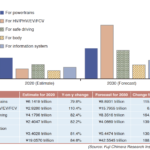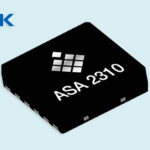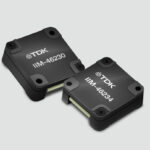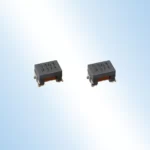ASIA ELECTRONICS INDUSTRYYOUR WINDOW TO SMART MANUFACTURING
New Technologies Propel Emerging Automotive Trends
Technological development of electronic components has been evolving in keeping with the advancement of automobiles. Accordingly, Japanese electronic components manufacturers have been accelerating the development of new electronic components setting their sights on the connected, autonomous, shared & services, and electric (CASE) megatrend.
Recently, they have been increasingly placing importance on electric vehicles (EVs) in new car development. They also focus efforts on the development of vehicles equipped with more advanced autonomous driving systems. Japanese electronic components and devices manufacturers are making all-out efforts in R&D of electronic components setting their sights on these next-generation vehicles.
Component Technologies for Electrified Vehicles
Electrified vehicles, including battery electric vehicles (BEVs), need to have longer cruising range per charge and improved electric power consumption performance. For that reason, electronic components mounted near automotive batteries, inverters, and converters must meet strict specifications to improve EV performance.
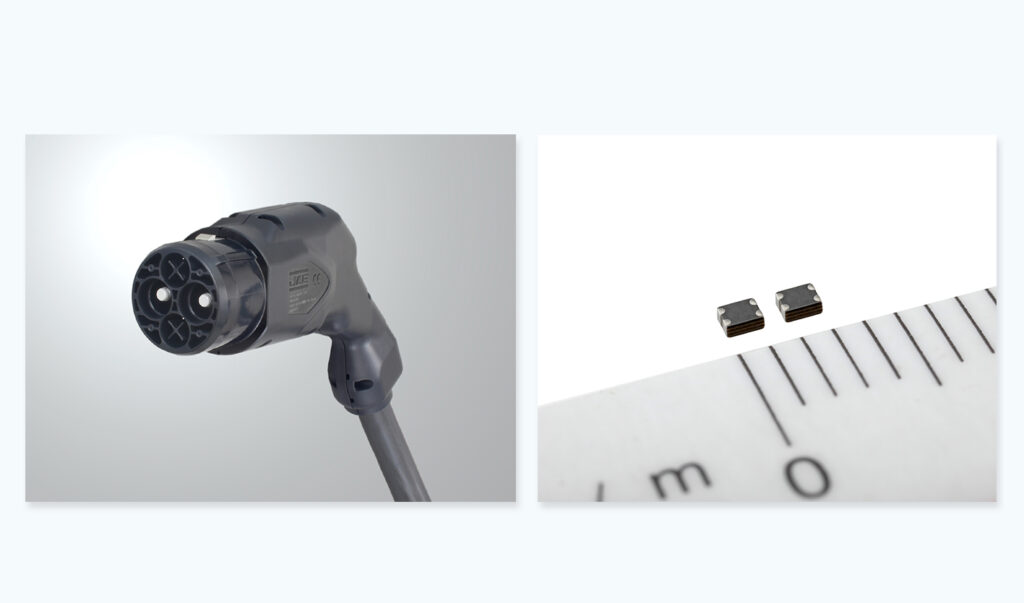
Inverters and converters need to be compact and provide high efficiency, making high-voltage-driven power devices indispensable. Conventional insulated gate bipolar transistors (IGBTs) use silicon-based wafers. However, recently, the development of power devices using silicon carbide (SiC) and gallium nitride (GaN) wafers has been gathering steam.
These moves have been spurring the development of peripheral components that support high-frequency switching and higher voltages. For capacitors, the emerging characteristics are smaller size, larger capacity, longer life, and low equivalent series resistance (ESR).
Meanwhile, for resistors, small size, high voltage, high power, and low resistance are pursued. With transformers and coils, development of compact products with low loss and high efficiency has been progressing.
Going forward, the demand for e-Axle, a unit integrating the motor, inverter, and gear, will likely increase. Hence, efforts have also been focused on the development of components for e-Axle.
Components Related to ADAS, Autonomous Driving
Achieving autonomous driving requires the integration of various technologies. These technologies include enhanced communication performance, highly accurate object recognition, advanced vehicle control, artificial intelligence (AI), and information processing technology. This includes edge computing.
Furthermore, extremely high reliability is necessary for mounted components. Hence, Japanese electronic components manufacturers have been accelerating the development of electronic components to meet these requirements.
Meanwhile, sensor fusion for advanced driver-assistance systems (ADAS), and autonomous driving is becoming more active. The same goes with the development of high-pixel sensing cameras, millimeter radars, light detection and ranging (LiDAR) sensors, and infrared sensors.
In addition to the existing mechanical type, the development of solid-state LiDAR sensors has been advancing. Although long-distance measurement and resolution were the challenges of the solid-state LiDAR sensors, technologies have developed to solve these challenges.
Also, transition of on-board cameras toward 1-million-pixel models has been progressing. Going forward, transition to 2-million-pixel and 3-million-pixel models will also advance.
Components for Safety, Comfort
Recent vehicles come equipped with expanded features to enhance safety, comfort, and convenience of passengers. Thus, they are creating new demand for electronic components.
Sensor systems that improve comfort and optimize fuel efficiency have emerged. In these systems, detection of temperature and humidity in the cabin is linked with air conditioner control.
Meanwhile, in recent years, accidents caused by leaving children unattended in a car occurred. As in-car monitoring devices designed to prevent such accidents, millimeter radars and four-dimensional (4D) imaging sensors are proposed.
Level 3 and higher autonomous travelling level vehicles must be able to grasp the driver’s physical conditions and switch between the autonomous driving mode and manual mode. To meet these requirements, manufacturers focus efforts on the development of sensors for driver’s biological information monitoring systems.

